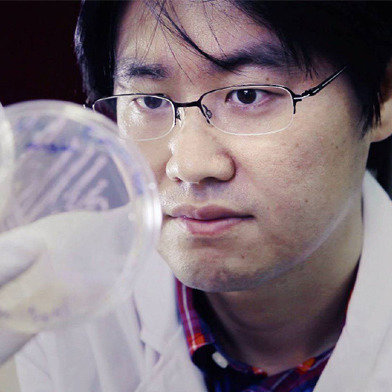Korean scientists develop technology to produce acetone from CO2
Korean scientists develop technology to produce acetone from CO2
Posted February. 29, 2016 07:06,
Updated February. 29, 2016 07:16

The research team led by Woo Han-min at the Korea Institute of Science and Technology said on Sunday that it had developed technology to produce acetone directly from solar light and carbon dioxide by using bacteria. The team paid attention to "cyanobacterial photosynthesis," which use sunlight and carbon dioxide. Cyanobacteria, or blue-green algae, is microorganism that is known to have generated oxygen in primitive Earth. The research team inserted certain gene into cyanobacteria, and engineered to enable the bacteria to generate acetone in an environment where solar light and carbon dioxide exist. Acetone is chemical that is not only used in deleting manicure but also applied as organic agent in chemical processing.
Cyanobacteria can be economically reproduced in large volume just with supply of sunlight and carbon dioxide, and grows even faster than plants. The research team has enhanced the utility of the system by making it into a module, and has made it possible to adjust the speed at which acetone is produced by changing the surrounding environment.
“If we apply the outcome of our study to facilities that emit carbon oxide, we can reduce carbon dioxide emission, and produce acetone that is needed in chemical processing,” Woo said. “This could become a new breakthrough in coping with climate change.”
The study was published in the February 16 issue of "Plant Biotechnology," an international journal in plant science.
이우상동아사이언스기자 idol@donga.com
Headline News
- Kim Jong Un: Negotiations with U.S. have gone to the limit
- Yoon’s support rating remains at 20% for two weeks in a row
- SEC chair known for cryptocurrency regulations announces resignation
- Medical student scores 398 on CSAT, signaling ‘applications for reach schools’
- Noh Kyung-eun to play up to three more years with SSG







